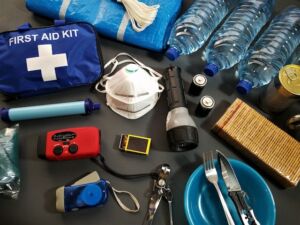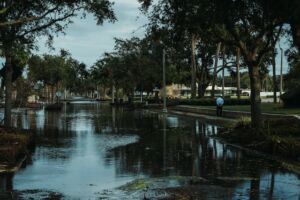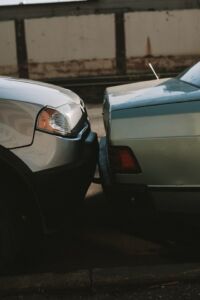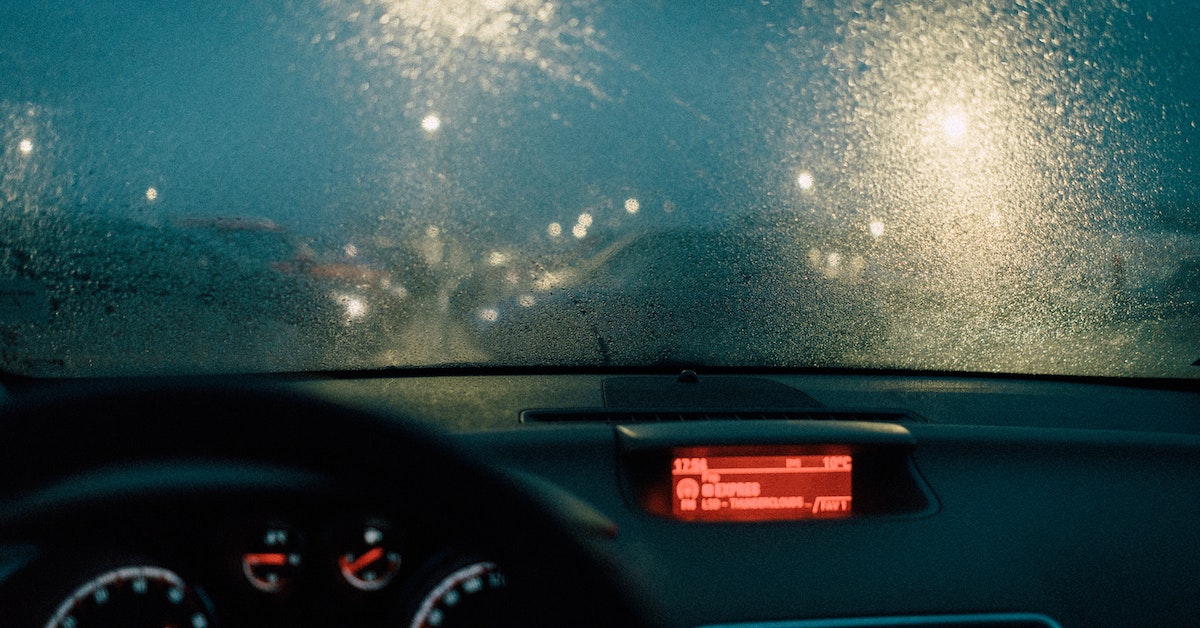It may be March, but much of the country has seen winter storms recently. Here in Murfreesboro, heavy rain and wind are common driving hazards this time of year. While some driving advice is applicable year-round, like driving sober and avoiding distractions, there are also specific safety practices to keep in mind this spring.
Most deadly accidents happen on warm, dry days when it’s easier for drivers to speed and drive recklessly. But weather-related accidents, even at slow speeds, can still cause significant personal injury. Even a fender bender rear-end collision may cause back and neck strain in the passengers of the rear-ended car.
Here are five tips on how to avoid a car accident this spring.

Avoid Hydroplaning
It doesn’t take much standing water on the roads for hydroplaning to occur. The scary feeling of your car riding on the water can happen with as little as one-twelfth of an inch. That means even in light rain, it’s essential to keep wet weather driving procedures in mind.
The steps to avoid hydroplaning fall into two categories: vehicle maintenance and behavior modification.
To prepare your vehicle for wet weather, check your tires and ensure the tread depth is above 2/32nds of an inch (the deeper, the better). Properly maintaining your tires and brakes will ensure your car is safe to drive on wet roads. Drivers of pickup trucks or other vehicles with empty space should consider weighing them down with sandbags. A heavier vehicle is less likely to slide on water or ice.
Vehicle maintenance is the easy part of safe driving preparedness for many drivers. The hard part is changing how you drive. Slowing down is the single best way to prevent weather-related accidents. Remember that the posted speed limit is the highest speed you should drive during ideal daytime conditions. Everyone should drive under the speed limit at night or during bad weather. Keep your driving smooth and pump your brakes gently before coming to a stop. Hard braking can cause you to hydroplane on water or skid on ice.
If, despite your best efforts, you hydroplane, take your foot off the gas, don’t press the brake, and steer into the skid. This will help you regain control.

Leave Some Space
In Tennessee (and across the country), following too closely is a major cause of car accidents and personal injuries, even in good weather. We’ve all heard the tip about counting how long it takes to reach a particular landmark after the car in front of you, but here’s a simpler one. You should be able to see the rear tires of the car in front of you (including where they meet the pavement.) If you can’t see that, you are following too closely.
In bad weather or poor visibility, leaving even more room between you and the car in front of you is a good idea. Following closely isn’t only dangerous while you’re moving, but also at a stoplight. If the car behind yours rear-ends you, you’ll be pushed into the car in front of you. Or, if the car in front rolls back slightly, it could hit your car.

Carry Emergency Supplies
Even if you are making a short trip across town, you should always have emergency supplies in your vehicle. They may come in handy if you run out of gas, break down, or encounter a weather-related emergency. Emergency supplies for vehicles fall into five main categories: sustenance, warmth, visibility, communication, and weather-specific supplies.
Beginning with sustenance, you should have food and water for everyone in the car. Preferably enough to last two or three days in the worst-case scenario. If you often travel with pets, infants, or young children, don’t forget to pack their food too. Powdered infant formula, packaged toddler foods, dry pet food, and energy bars are examples of things a family should pack. Experts recommend keeping one gallon of water in your car, plus an extra quart for each person (or pet).
You should stock your emergency kit with blankets and hand warmers for everyone in your family, even during the summer. If your family is stranded, overnight temperatures may get chilly, and it’s possible to freeze to death at fifty degrees if you don’t have protection from the elements.
Typically, if you encounter car trouble, you pull over and put on your emergency flashers. If these break down too, you’ll need something else to make you visible. Reflective triangles and road flares are popular options for emergency kits. These are easy to pack, and flares will improve visibility even in nasty weather. You should also carry a flashlight with extra batteries or a headlamp.
As for communication, most of us depend on cell phones, so having a battery-powered charger is essential. Weather-specific supplies may include a shovel, ice scraper, salt, and cat litter. These tools can help you get your car unstuck in wintery weather.

Turn Around, Don’t Drown
We read about cars being swept away during extreme weather events every year. While safe driving habits can keep you out of harm’s way in moderately stormy conditions, some storms call for avoiding the roads altogether. Always pay attention to weather alerts for your area, and avoid driving in bad weather conditions. If you come across a deep puddle of water, such as those that often accumulate at the bottom of hills, don’t attempt to drive through it. Even large vehicles can get stuck or carried away.
Severe weather often comes with heavy rain and strong winds. If you own a high-profile vehicle (which includes SUVs and some Crossovers), don’t drive it during winds over 30 mph.

Know What To Do in an Accident
If you are involved in an accident, even a minor one, pull over, remain in your vehicle, and dial 911. Get checked out by a medical provider within forty-eight hours of the accident. It’s common for people to think they aren’t hurt at the time of the accident but then feel pain days later when their adrenaline wears off. Your provider can use imaging and a physical exam to pinpoint muscle strains, whiplash, or joint injuries.
Beginning a personal injury treatment plan right away will improve your healing outcome. Taking care of diagnosis and treatment promptly will also make your insurance claims process smoother.
Don’t tell anyone at the site of the accident that you aren’t injured. This could be used against you if you need medical expenses covered. It’s better to say you don’t know or need to see your doctor. Remember that your insurance company represents you, so it’s better to speak with them and let them deal with the other driver’s insurance.
Following these safe driving tips and being prepared if an accident occurs will protect your family’s health and finances.
Personal Injury Treatment in Murfreesboro
At Stanlick Chiropractic, we treat patients suffering from car accident-related injuries, including herniated discs, muscle strains, and whiplash. Our staff has extensive experience dealing with insurance claims. We’ll walk you through the filing process and bill your insurance directly. This means you won’t have to pay until your claim is processed. If you need a lawyer, we can give you a referral. Schedule a no-fee consultation today to learn how our comprehensive personal injury services can help you heal with less stress.

